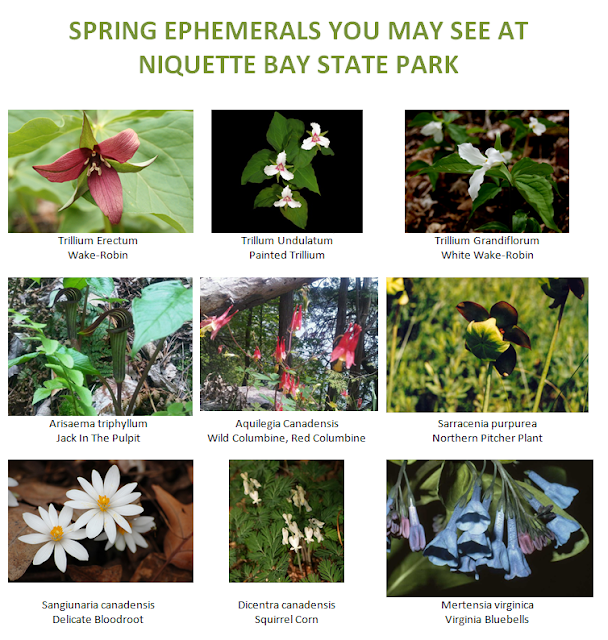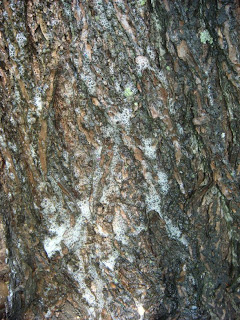Spring Beauty and Fresh Starts at Niquette Bay State Park
 |
| Hepatica at Niquette Bay - Lisa Liotta |
Spring is full of fresh starts (including the Parks Operating Season). As Park Staff prepared for the park season, Niquette Bay State Park began filling with spring wildflowers. Niquette Bay State Park houses many wildflower colonies that put on a beautiful show for just a few weeks this time of year.
Learn what makes these short-lived beauties so special and what types of flowers you might find!
What are Spring Ephemerals?
These are unique early blooming wildflowers that grow, flower, and seed all in the very short 6-8 week window before the shade from leaf trees covers the forest floor. By the time deciduous trees have leaves, these flowers will be gone.
Where do they grow?
The best location to find these is in a predominately hardwood, deciduous forest with large trees and little undergrowth. They can grow very well on rocky ledges in less-than-ideal soil conditions. These plants are usually very small and begin growing under the cover of leaves from the previous year. These plants begin growing before the last snow has melted!
How do they spread?
Ephemerals are perennials. This means that the plant may live for several years, IF it is undisturbed and has favorable growing conditions. Each year it completes a cycle of growth, flower, seed, and then die-back to the ground at the end of its season to wait for the next year.
A number of ephemerals have a special ways to spread their seeds. The plants grow a tasty, fat-filled part that attracts ants. Ants will carry the seeds back to their nests up to a few meters away, the young ants then eat the fatty part, and the ants discard the seed. A new plant may germinate the following year from the discarded seed. This is how colonies of Ephemerals form.
Can we pick the flowers or take the plants?
No. Aside from collection being illegal, these beauties are best left in nature. Once the flower is picked, it cannot produce a seed to grow a new plant the following year. Removing a plant stops the process; that plant is gone from its native habitat forever, and so are any future flowers it may produce that would go to seed in that location.
Are any of these rare or endangered plants in Vermont?
ABSOLUTELY! Many rare and endangered species live at Niquette Bay State Park. Some Spring Ephemerals live in colonies that are over 300 years old. Did you know that it takes up to two years for a Trillium seed to germinate, and then in optimal conditions, another 7-10 years for the plant to flower? Spring Beauty (Claytonia virginica) is so rare, that there are less than 5 high quality occurences in the entire State of Vermont. This plant lives here in the Park, along with many others that are classified as rare and endangered.
Once an Ephemeral colony is gone, it is exceptionally rare that it will ever return. Please help protect these wild gems!
What should we do to help protect these fragile species?
- Stay on the trails, admire from a distance, do not disturb the plant colonies if at all possible.
- Keep dogs under control and away from wildflower colonies; it may be rare or endangered.
- Pick up all dog feces no matter where they land; feces are highly concentrated with nitrogen and phosphorus and will kill plants, not fertilize them.
- Never pick a native wildflower or remove the plant.
Did you know...
Last year a "one in a million" white trillium was found at Niquette Bay State Park. These plants flower every one or two years and typically have three petals. This mutant flower had an incredible 15 petals. Head on out to Niquette Bay and see if you can spot these incredible flowers!
Have any images or videos of your wildflower adventures in Vermont State Parks? Make sure to share them to our Facebook, Instagram, or Twitter accounts with #VTStateParks. What are your favorite spring wildflowers? Share in the comments below!



.jpg)
.jpg)
Comments
Post a Comment
Feel free to let us know what you think.